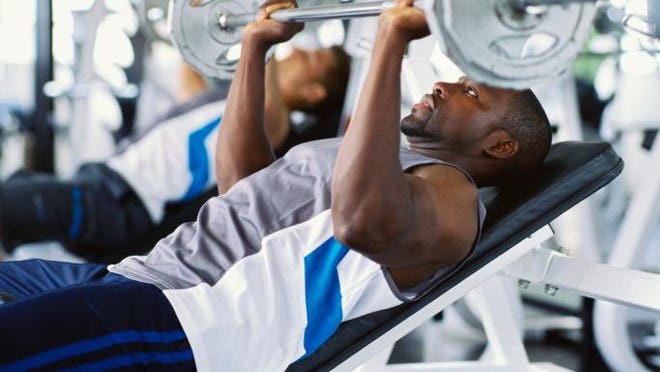
In my younger years, I was an exercise freak. The good news is that I was fit and skinny and loved working out. The bad news is that I overdid it.
One way you can overdo it is to keep going even though you’re injured. If, for example, I hurt my shoulder doing heavy bench presses, I’d gobble down a bunch of ibuprofen to mask the pain so I wouldn’t miss my next workout. Now I know how stupid that was and that my injury needed to heal completely before I challenged my shoulder again. Instead, I compounded my original injury with more trauma, opening the door to osteoarthritis (bone-on-bone rubbing) and ultimately to major shoulder repair surgery later in life.
Overcoming injuries is a common fallacy in our society, probably stemming from the philosophy of most coaches. Ankle sprain, no big deal. Run it or re-record it and return to the game. When you do this, the original injury gets worse.
In class, I like to ask my students University of Hanover if they can recall any incident where they were injured and moved on. All athletes can count at least one, and most can count many. Next, I ask them if they think they got away with it and if it was the right thing to do. Most answer yes and yes. In response, I ask that you contact me in 20 or 30 years and let me know how it goes. This is because the body keeps a careful journal of such transgressions, and when the damage is advanced enough, you begin to feel stiffness and pain, wondering where it came from.
You may likeWhat is high fructose corn syrup and why is it bad for you? Here are 4 things you need to know
And that’s just the starting point. It gets worse year after year as bone rubs against bone, disfiguring the bones, and if it gets too bad, you’ll need a joint replacement. So here’s how to avoid that in the future:
What is overtraining? And how does it affect my body?

Another common mistake is overtraining, caused by not understanding the relationship between exercise intensity and volume. In general, this should be an inverse relationship. If you exercise at a high intensity, you should reduce the volume. Similarly, if the intensity of your exercise is low, you can increase the volume. Keeping this relationship in check is especially important when it comes to lifting weights, also known as endurance training.
Novice weightlifters are often guilty of overtraining because they do too much, thinking that the more they do, the better and stronger they will get. Is not true. Lifting weights puts a strain on your muscles and often causes micro-damage to muscle cells that requires repair. During the repair process, the body will seek to do more than just repair damage at an earlier level. It will overcompensate and add more contractile proteins to the muscle cells. It does this to strengthen and help the muscles more easily meet the challenges that come in future workouts. However, repair, and especially overcompensation, takes time and resources to accomplish. If you do too much (high intensity and too much volume) you tear the muscles too much. This requires more rehab time, but if you don’t provide it, your next workout will target muscles before they’ve fully recovered.
You may likeHere are 4 things men should know about testosterone therapy and the signs of low testosterone.
What is the value of rest days with exercise?

Perhaps the most important discovery in strength training in the last 75 years is the value of rest. This lesson came too late for the Americans. Olympic weightlifting team in the 1960s. Until that time, Americans dominated Olympic weightlifting, winning gold medals in nearly every weight class. Then something happened.
Yes, anabolic steroids they appeared on the scene, but every country was using them and they weren’t illegal yet. The key development was applying science to training, which is exactly what Russia and Bulgaria did, and in the process, outclassed the Americans, leaving us in the dust to the point where we were lucky enough to win a bronze medal in any weight category. .
Two key scientific discoveries catapulted the Russians and Bulgarians into Olympic competition. The first was to reduce training volume, which allowed for increased training intensity, leading to increased strength. The second was to apply more rest between workouts to ensure full recovery.
Ironically, back then, when their Olympic performance flagged, the Americans went in the opposite direction. In an attempt to catch up, American weightlifters increased the intensity and volume of their training. Part of this was caused by misinformation from the Bulgarians who deliberately, “ironically”, misinformed the Americans that they don’t train as hard as the Bulgarians and that is why they are falling further and further behind. The opposite was true, but we didn’t know better.
It wasn’t until the Iron Curtain came down and communication improved that the truth was revealed that the American team was tricked into training too much while the Bulgarians rested more, laughing at our stupidity.
You may likeWhy diet soda is bad for you and not the answer if you’re looking for fast weight loss
How do I balance exercise, diet and sleep?

This brings up another important aspect of training. When you train, think in terms of your overall approach like a three-legged stool. One leg is exercise. It is important not only to exercise in the correct way as described above, but also to pay attention to the other two legs.
The second leg is proper nutrition, and protein is a very important factor. The average person requires approximately 0.36 grams of protein per pound of body weight. This can increase to 0.55 grams for runners and other endurance athletes. But for weightlifters, protein needs are at least 0.72 grams and can go as high as 1.0 gram per pound of body weight for those who train hard at a very high intensity.
The third leg is sleep. Exercising hard is just preparation for progress. The real progress occurs during sleep because that’s when protein synthesis and rebuilding is maximized. In other words, without getting enough sleep, you’re letting yourself down, no matter how dedicated you are to your training and nutrition. The average person requires seven to nine hours of sleep every night, and those involved in intense training should get at least that amount of high-quality sleep.
The bottom line is that vigorous exercise is great for the body, but you have to be smart about it and not overdo it.
Contact Bryant Stamford, professor of kinesiology and integrative physiology at Hanover College, at [email protected].
